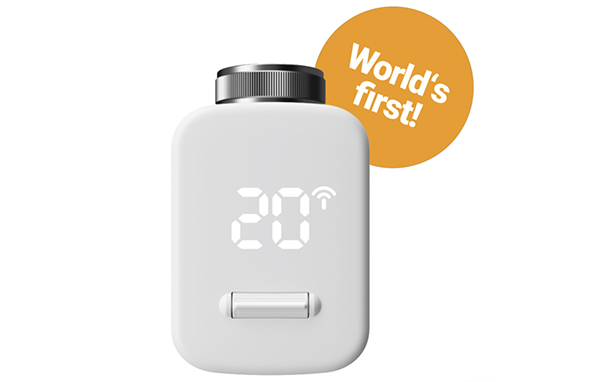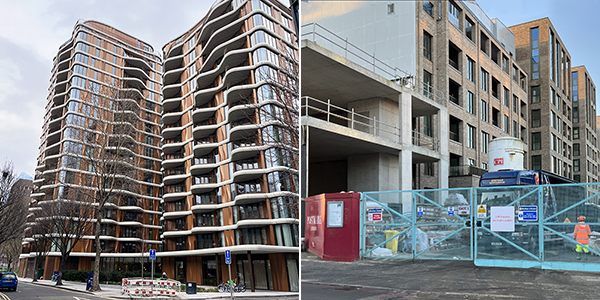
Simon Buddle looks back over significant developments for KNX in 2023 and forward into 2024, including LED control, RF radiator valves and KNX being embraced by the MDU market.
Another year down and possibly time for a little reflection. It is an integral part of the new year along with resolutions, fitness regimes and of course the obligatory dry January to make amends for all the party excesses of the past few weeks.
In the KNX world, there have been several new products which I see as huge leaps forward, most notably how we control LED lights. MDT, Jung, Zennio, Meanwell – the list goes on – have all introduced products that control LEDs in the extra-low-voltage range. This removes the need for third-party drivers by putting KNX in direct control of the LED. For many outside of the KNX community, tuneable white, RGBW and even simply dimming LEDs can still represent challenges. But not for us.
What am I looking forward to in 2024? I think the introduction of the long-awaited RF radiator actuator from ISE. For the retrofit market this will no doubt be a fantastic addition.

KNX comes of age in the MDU market
Reflecting on 2023, I think the most impressive part of the KNX world must be just how many MDUs (multi dwelling units) have had KNX products specified and installed in them. We all know the value of a well-designed KNX system, and for sure, the core of many of our businesses has been providing bespoke KNX and AV systems for homeowners. Whilst there are elements of each installation that are similar, it is equally true to say that they are all unique or bespoke in nature, tailored specifically to the needs of the individual.

The MDU market, however, is different. You are not working for an individual but for a property developer and M&E consultant. Add to the mix the fact that most MDUs are nearly identical in design and layout (apart from an additional bedroom or bathroom here or there), and we can see the same set of KNX products installed repeatedly. Apartment by apartment, the system equipment is identical and the ETS project file is all but the same from one property to the next. So why is KNX so important for us? There are two reasons:
1. KNX solves problems others cannot
Historically, most technical solutions for MDUs have been kludged together using products from many manufacturers, all communicating via different languages. This leads to expensive translator products (BACnet to Modbus or similar) and no end-to-end ownership of the controls. There are three technical issues KNX solves all of the time, every time:
a) Temperature sensor in the lighting keypad, meaning no need for a separate thermostat.
b) The heating and cooling by default are interlocked, therefore meeting building regulation requirements and simplifying functionality for the end-user.
c) Centralised plantroom control with real-time feedback from all apartments.
I could list another ten, but we do not have time. One last thought worth mentioning is how easy it is for KNX to provide real-time energy monitoring that can be used for billing to the homeowner. That is a very common feature for many MDUs now.
2. The world of M&E has woken up to this fact and is now using KNX in a way that no other system on the market allows
It feels as if there has been a bit of an epiphany for many in the M&E world. This means that the message is getting through and the solution is working for them. For all the reasons above and many more, the KNX installer can say ‘yes’ to items that have posed technical issues for consultants for many years.
Proving its worth
During 2023 I worked in five different MDUs either as an extra pair of hands or as part of the M&E team. The first development has two towers totalling 139 apartments. The second, when finished, will have more than 600 apartments. The list goes on. KNX is being specified because it works, it solves many issues, and it is robust. It is a single solution for multiple applications that does not need any crazy expensive language converters. And most importantly, it does not leave any room for interfaces/connections to fall between the specification cracks.

Conclusion
So, for me, the highlight of 2023 must be witnessing first-hand KNX’ coming of age as the ‘go to’ solution for M&E consultants in the world of the MDU. This is validation of the products, the communications protocol and most importantly, those who design and install systems. It means that the message is spreading, and the M&E community are embracing KNX, they understand that it solves problems, that it fits aesthetically, and most crucially, that it works and does the job it is designed to. In turn they can influence the decision makers – the money people – that KNX is the right solution to back, in their development. All of that is a testament to the work that the KNX community has done and continues to do. Advertising, evangelising, demonstrating, but more than anything, technically nailing it, job after job, house after house, development after development, and that is what is driving the success of KNX. Things are looking up for 2024!
Simon Buddle CEng MIET, is a consultant for Future Ready Homes, a specialist in BMS and ELV services system design.












